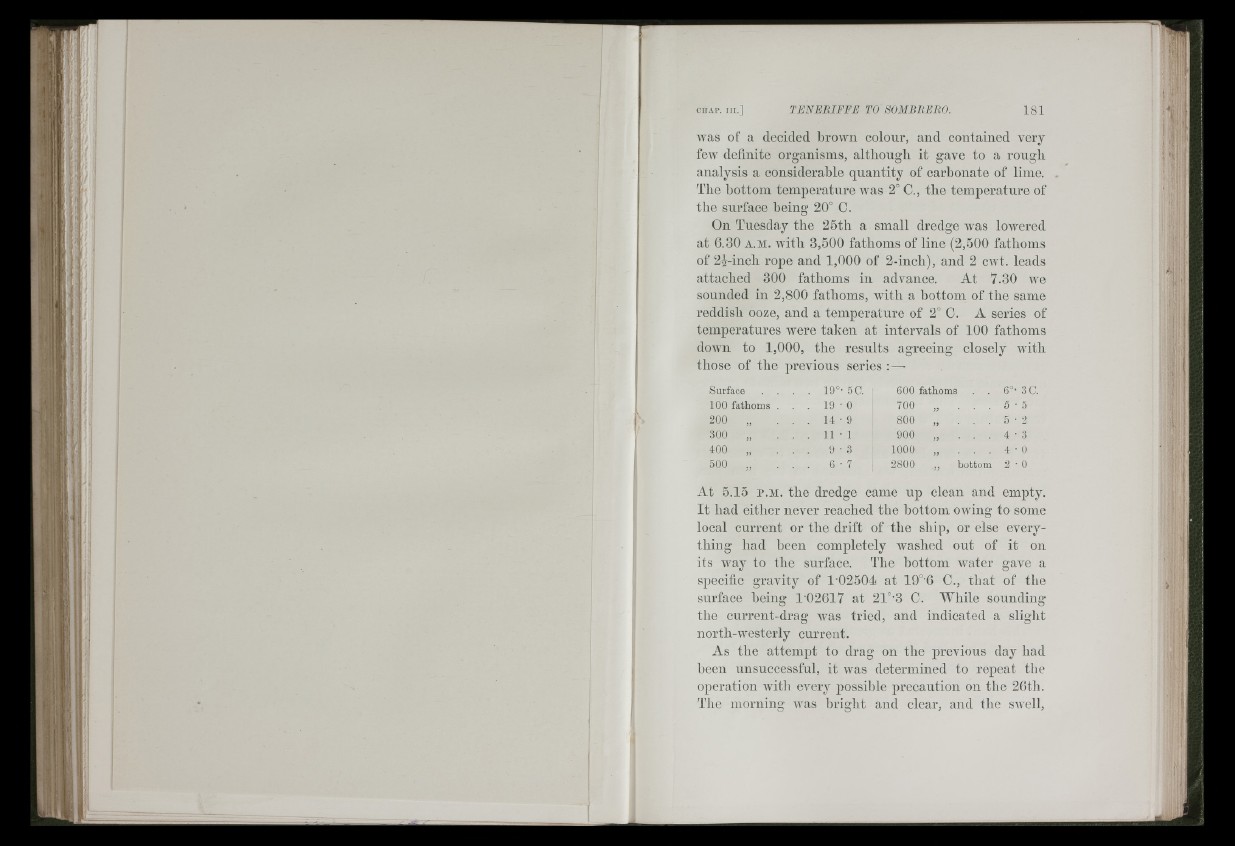
II
y.
tifi
' ii tl
ft
t'
• '
was of a decided brown colour, and contained very
few definite organisms, although it gave to a rough
analysis a considerable quantity of carbouate of lime.
The hottom temperature AA'as 2° C., the temperature of
the surface heing 20° 0.
On Tuesday the 25th a small dredge was lowered
at 6.30 A.M. with 8,500 fathoms of line (2,500 fathoms
of 2i-iuch rope and 1,000 of 2-inch), and 2 cAvt. leads
attached 300 fathoms iu advance. At 7.30 Ave
sounded in 2,800 fathoms, AA'ith a hottom of the same
reddish ooze, and a temperature of 2° C. A series of
temperatures were taken at intervals of 100 fathoms
doAA'u to 1,000, the results agreeing closely Avith
those of the previous series :—■
loms . . 6°-3C.
„ . . . 5 ■ 5
, . . . 5 • 2
Surface . 19° ■ 50. 600
100 fathoms . . . 19 • 0 700
200 „ . . . 14 '■ 9 800
300 „ . . . 11 • 1 900
. . . 4 - 3
400 „ . . 9 ■• 3 1000
„ . . . 4 • 0
500 . . 6 ■ 7 2800 bottom 0
At 6.15 P.M. the dredge came up clean and empty.
It had either never reached the bottom owing to some
local current or the drift of the ship, or else everything
had heen completely washed out of it on
its way to the surface. The bottom Avater gave a
specific gravity of 1-02504 at 19°'6 C., that of the
surface being 1-02617 at 21°-3 C. While sounding
the current-drag Avas tried, and indicated a sliglit
north-westerly current.
As the attempt to drag on the previous day had
heen unsuccessful, it was determined to repeat the
operation with every possible precaution on the 26th.
The morning Avas bright and clear, and the SAvell,
r- 4;